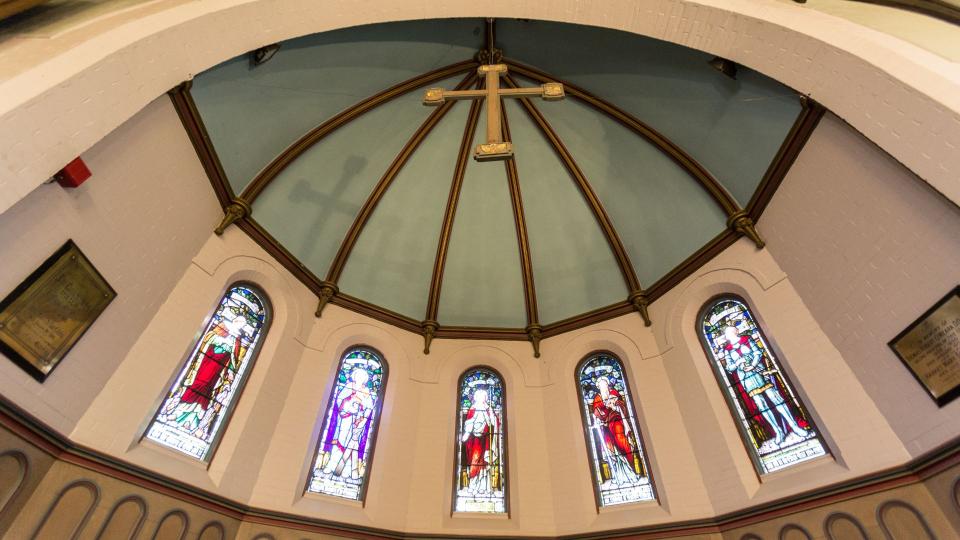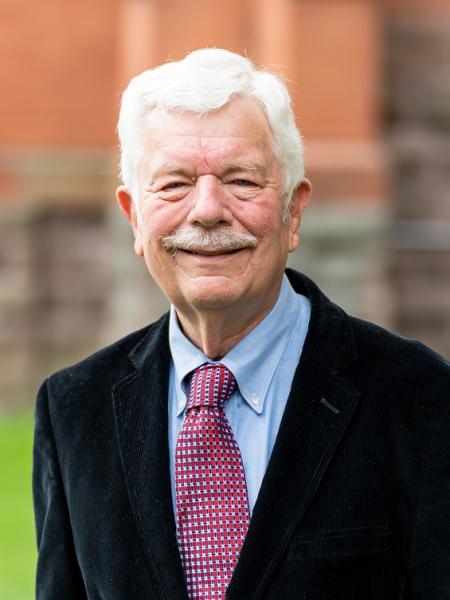By Alan L. Hayes: In 1989, Lewis Garnsworthy, the bishop who ordained me deacon, gave his last address to the clergy of the diocese of Toronto before his retirement. His thesis was that the Anglican Church of Canada had changed in so many significant ways since his ordination in 1945 that it was no longer the same institution. He gave many examples.
He began by speaking of taking the train in 1943 from Edmonton to Toronto to begin his theological studies at Wycliffe. At one point, looking out the window, he could admire the mammoth Anglican Indian Residential School at Elkhorn. What pride the church took in its work there! By 1989, pride had turned to shame.
When you rang the church bell on Sunday in his early days of ministry, Lewis said, people came and packed the churches; and the Sunday schools enrolled hundreds of children. (Today, much smaller numbers restrain our mission and our church activity.)
And it was a world of celebrated pulpit stars. They went across Canada every Lent, leading daily preaching missions for a week at a time that drew large crowds. (Fewer churchgoers today enter church in the expectation of a life-changing sermon.)
The Church still held to a largely Victorian theology and ethics. Lewis didn’t recall hearing any radical theology before the 1960s. The nineteenth-century biblical criticism of Westcott, Hort, and Lightfoot still held sway. (Anglicans aren’t all radicalized today, but the challenge of radicalism has influenced how we understand the gospel and how we tell the world about it.)
The Church didn’t protest the status quo; it was part of it. It helped those in need individually, but it didn’t advocate changes in social policies with a view to addressing needs structurally. As an example of the Church’s failure in social justice in the 1940s, Lewis recalled how the Church looked the other way when about 20,000 Japanese Canadians were swept into relocation camps. (Today Anglican leaders and members commonly advocate for a more just and environmentally responsible society.)
Ministry was absolutely clerical. As a priest, Lewis felt the need to have the key to every cupboard, his finger on every pulse. (Clericalism isn’t dead today, but lay ministry is a firm reality.)
Lewis had the sense that in his early years Anglicans bonded less over what they loved than what they hated. They found their identity in us against them: low church against high church, Anglican against “non-conformist,” Protestant against Catholic, Christian against non-Christian. (My experience is that ideological denominationalism and “churchmanship” have waned in our branch of Anglicanism.)
Before television stations were established in Canada in 1952, the main weekly service at many Anglican churches, including Lewis’, was Evening Prayer on Sunday. The reason Sunday evening services pretty much disappeared, he maintained, was because Ed Sullivan’s television show was broadcast on Sunday evenings. (We can probably think of many other ways that church life has been influenced by our society’s media revolution.)
In most Anglican churches, Holy Communion was celebrated only once a month. During what was popularly called the “Judas hymn” after the Prayer for the Church Militant, a mass exodus of congregants left a small remnant to receive the sacrament. (There’s much to appreciate in the eucharistic revival of the past generation, although it can be inhospitable to seekers.)
You didn’t see children in adult worship in his early days in ministry, he said: they might disturb people. They were kept away from the adults by walls “as high as the Great Wall of China.” (Today families share in Sunday worship—but in most Anglican churches that I know, there are fewer families.)
For many families, the church was the centre of social life in the 1950s. The parish hall or parish lounge hosted scouting for kids, the bowling league for men, Dorcas groups for “the ladies,” parish suppers, and numerous other activities. The Anglican Young People’s Association played a vital role in many lives; not a few members found marriage partners there. (Few Anglican churches today dominate the social lives of their members in that way.)
Baptisms were processed on a quasi-industrial scale, and there was no baptismal preparation. Lewis recalled how the rector appeared at the font on a Sunday at 4 p.m., and the parents with infants to be baptized showed up with their friends and relations, filled out a form, and waited in line. Afterwards the mothers were marched to a side chapel for the churching of women. (Now most baptisms take place in the Sunday morning service, and there aren’t usually many of them. There’s no churching of women.)
Lewis identified several other changes between 1945 and 1989, too, each with its pro’s and con’s. Confirmation was de-emphasized. Divorced clergy became broadly acceptable. The texts and theology of Anglican liturgy changed. Ecumenism waned. He didn’t even mention the ordination of women, or the dismantling of Canada’s racist immigration regulations in 1963, which began to mitigate the militantly British culture of Canadian Anglicanism.
In short, change overtook the Anglican Church of Canada in its approaches to theology and biblical interpretation, its relation to both settler and Indigenous society, its worship, its preaching, its ministry, its cultural character, and its ecumenical role. I’m pretty sure that similar things were happening in many other Canadian denominations, too.
Lewis frequently punctuated his list of church practices in his early years of ministry with the phrase, “And it wasn’t all bad.” So it’s not that he or others at the time were keen for change. But church leaders and members were overlooking trends that in the 1960s burst forth dramatically—and dangerously. When that happened, the churches weren’t ready. Should they double-down on the old ways? Should they adapt to a new world?
When, wearing my historian’s hat, I consider Lewis’ reminiscences, I think: we in the Church are accustomed to taking a short view of things. We might better take account of ourselves in historical perspective, and consider where we stand in relation to the two categories of life that dominate my professional research—continuity and change.
Now, continuity and change are tricky categories, because it’s not that some things are continuous, while other things are changing. On the contrary, continuous things change, and changing things display continuities. According to one of the wisest propositions in the history of philosophy, “you can’t step into the same river twice.” That is, the river from day to day may have the same name and run the same course, but the water and its creatures are always in flux. And as one of the great questions in the history of philosophy asks: is there a point at which the Ship of Theseus has had so many of its parts replaced that it’s no longer the Ship of Theseus?
Yes, as Lewis Garnsworthy said, the Anglican Church of Canada had changed. But it wasn’t entirely different, either. What he identified as changes could also be seen as adaptations in the implementation of continuing principles, in the light of other continuing principles.
When we look under the appearance of continuity in the Church for the currents of change—and look under the appearance of change for the continuities—we’ll be better able to appreciate the dynamics of our moment in the Church’s history of perpetual transition towards God’s future. For that transition is the tension between change and continuity. As a result, we may feel less threatened by the changes, and less stultified by the continuities, than we’d otherwise be. But we may also feel disoriented by the unfathomable complexity of Church history—by the mystery of God’s plan. If and when we feel disoriented, we need to look again to Jesus Christ, who is the same yesterday, today, yes, and forever, for He, not the Church, is our anchor. And we can take heart in Christ’s sovereign authority over a creation that is groaning together in the pain of labour as it awaits its transition to its final redemption.






